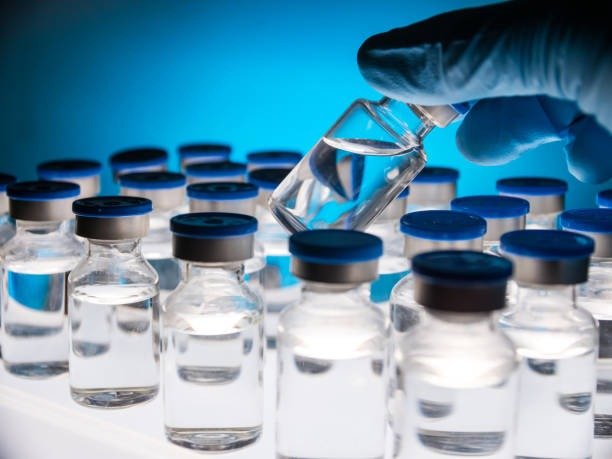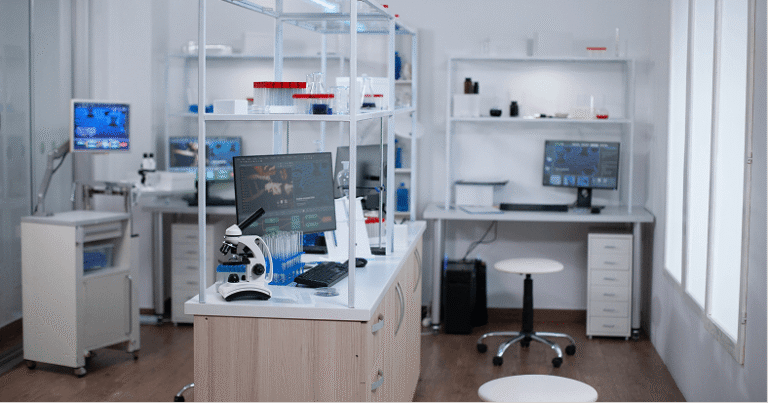This guide explains how to safely mix, store, and handle your research peptides.
It comes in two parts:
- Quick Start (Simplified) – for fast reference on safe storage and reconstitution.
- Full Guide (Detailed) – for researchers who want the complete, evidence-based best practices.
1. Quick Start – Simplified Guide
Why Reconstitution Matters
Peptide powders are freeze-dried for stability and long shelf life. To use them, you need to reconstitute them correctly to preserve activity and prevent degradation.
Storing Unmixed Peptides (Powder Form)
- Freezer (-20 °C): Best for long-term storage (up to 4 years).
- Fridge (2–8 °C): Fine for short-to-medium use (12–24 months).
- Room temperature: Stable during shipping and brief exposure.
- Keep sealed: Store vials away from light, moisture, and frequent temperature changes.
Tip: Limit freezer door opening — temperature swings shorten shelf life.
How to Mix (Reconstitute)
Our peptide vials typically hold up to 3 mL of liquid.
- Warm to room temperature: Remove the peptide vial and bacteriostatic water (bac water) from the fridge. Let sit for 15–20 minutes before mixing.
- Clean the vial tops: Wipe the rubber stoppers with an alcohol swab.
- Draw up bac water: Use a sterile syringe and needle. Add 1–3 mL of Bacteriostatic Water depending on your preferred concentration. Use the Bluewell Peptide Calculator for exact measurements based on dosage.
- Add Bacteriostatic Water to peptide vial: Inject slowly down the side of the vial. Avoid squirting directly onto the powder.
- Dissolve gently: Swirl in slow circles — do not shake. Wait a few minutes for complete dissolution.
- Store correctly: Once reconstituted, keep in the fridge (2–8 °C). Use within 3–8 weeks depending on the peptide. For longer storage, freeze in small aliquots with cryoprotectant (e.g. glycerol).
Shelf Life Summary
- Powder (fridge): 12–24 months
- Powder (freezer): 2–4+ years
- Reconstituted liquid (fridge): 3–8 weeks
- Reconstituted liquid (frozen aliquots): Several months with cryoprotectant
Don’t Do This
- Don’t use tap or boiled water.
- Don’t vigorously shake the vial — it damages the peptide.
- Don’t reuse the same needle across multiple peptides.
- Don’t freeze and thaw the same vial multiple times.
2. Full Guide – Detailed Protocols
Understanding Peptide Reconstitution
Peptide reconstitution is the process of turning lyophilised peptide powder back into a solution. Correct handling maintains integrity and reproducibility in research.
Risks of Improper Handling
- Loss of activity
- Aggregation and insolubility
- Bacterial contamination
- Chemical degradation
- Inconsistent results
Pre-Reconstitution Preparation
- Sterility: Always work in a clean environment. Use sterile syringes, needles, and bacteriostatic water to minimise the risk of contamination.
- Temperature: Allow both the peptide vial and solvent to reach room temperature before reconstitution. This reduces the chance of temperature shock and helps the powder dissolve more evenly.
Solvent Selection
- Bacteriostatic Water – Standard, multi-use, preservative extends shelf life.
- Sterile Water for Injection – Best for immediate use, no preservative, higher contamination risk if stored.
Mixing Best Practices
- Avoid shaking or vortexing (can denature peptides).
- Swirl gently at an angle.
- Allow several minutes for full dissolution.
Contamination Prevention
- Work in clean, low-dust space.
- Disinfect vial stoppers with alcohol wipes.
- Use fresh needles and syringes.
- Limit punctures into stopper.
Common Mistakes to Avoid
- Over-diluting (weak, unstable solutions).
- Using the wrong solvent.
- Skipping temperature equilibration.
- Insufficient mixing (leaves undissolved particles).
- Poor sterility during multi-use access.
FAQs
- Can I use tap water? No. Always use sterile bacteriostatic water for reconstitution.
- Why does my solution look cloudy? A clear solution is expected. Cloudiness can indicate temperature shock, peptide aggregation, or contamination. If this occurs, do not use the vial.
- How long is a peptide solution stable? Typically 2–8 weeks when stored in the refrigerator. Stability can be extended if frozen with a suitable cryoprotectant.
- Can peptides be frozen? Yes. Store in aliquots with glycerol to reduce freeze–thaw damage.
- Why does the powder look slightly different between batches? Minor differences in colour or texture are normal and do not affect purity or quality.
- Can I mix peptides together? Not recommended. Each peptide should be reconstituted separately.
Advanced Handling
- Storage optimisation: Use desiccants, log temperatures, avoid fluctuations.
- Quality control: Inspect solutions visually, document changes, test activity if needed.
Compliance & Responsibility
- Bluewell peptides are for research use only. Not for human or veterinary use.
- Users are responsible for proper storage, handling, and compliance with local regulations.
Quick Notes
- Some peptides are harder to dissolve — this is normal, just gently swirl and let it sit for 5–10 minutes before use.
- Always use bacteriostatic water for mixing, not sterile or tap water.
- If unsure about amounts, use the Bluewell Peptide Calculator to avoid misdosing.
- Reconstituted peptides = short shelf life. Dry powder = very stable.
Conclusion
Correct peptide handling preserves stability, prevents waste, and ensures reproducible research results. By following these guidelines, you safeguard both the integrity of your peptides and the reliability of your findings.
For troubleshooting, product-specific instructions, or technical support, contact Bluewell directly.



